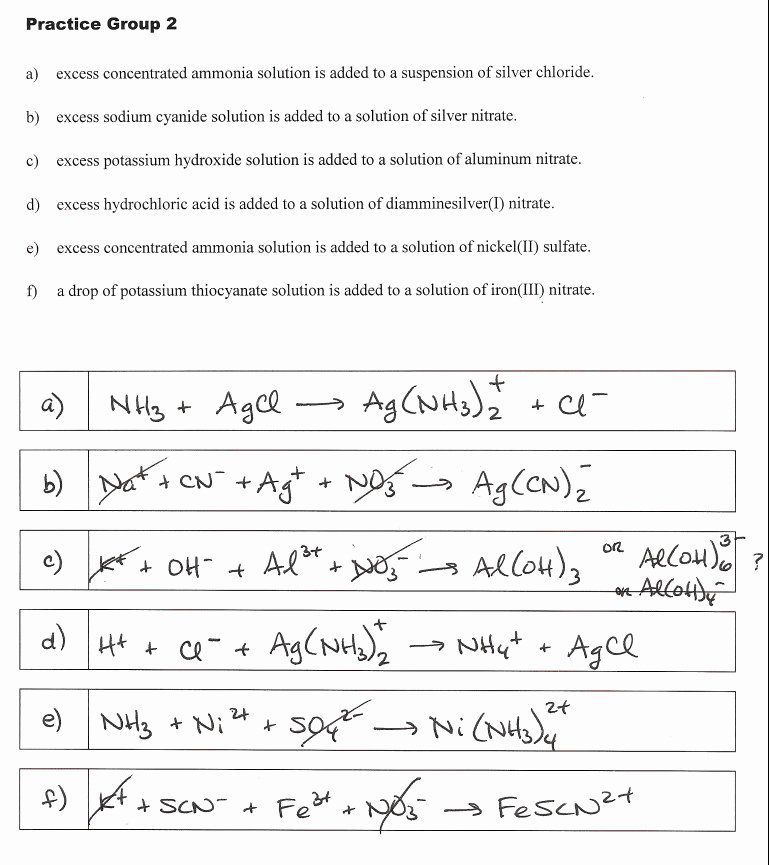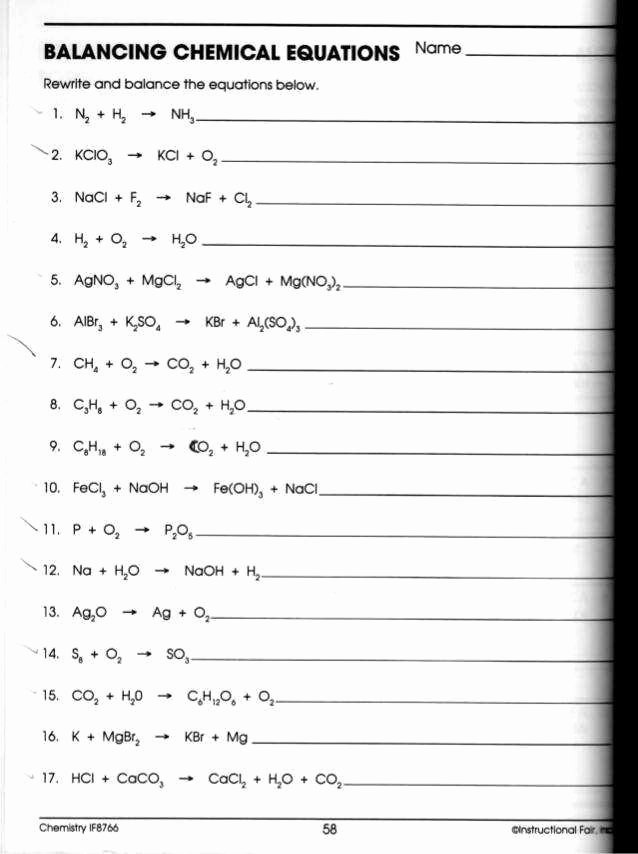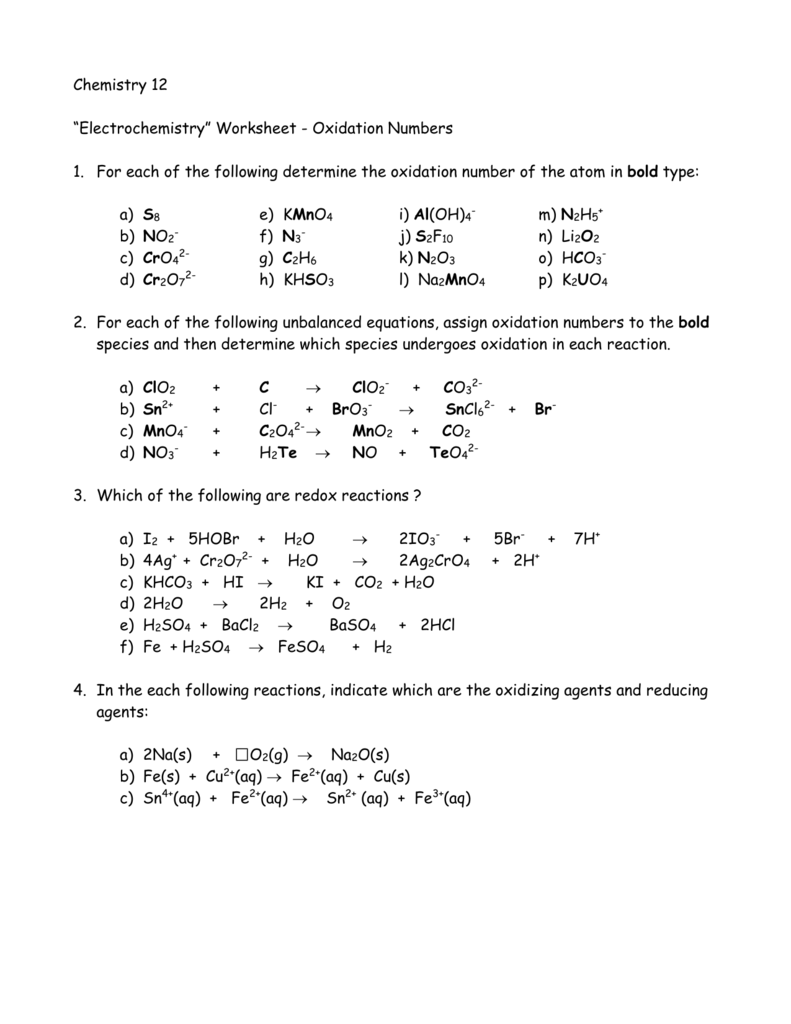Oxidation Reduction Worksheet Answers - Web state of the change that represents oxidation, reduction or neither. Remember that if the oxidation #. Second & third laws of thermodynamics. C u (s) → c u x 2 + (a q) + 2 e − reduction: Web assign oxidation numbers to each of the atoms in the following compounds: Cu 2+ (aq) + pb (s) (i) oxidation: 1) 2 na + fecl2æ 2 nacl + fe •sodium is oxidized,. Assign oxidation numbers to each of the atoms in the following compounds: Ra d) 2 mg(s) + o2(g) 2 mgo(s) reduction = o2 +. C) cu2+ (aq) + pb (s)!
Oxidation Reduction Worksheet Answers Number worksheets, Worksheets
Web that is, n will gain electrons and the oxidation number of n must lower. C u (s) → c u x 2 + (a q) + 2 e − reduction: Oa oxidation = fe 2+ (aq) fe 3+(aq) + e − fe 2+ = oxidized; Web for each reaction below, identify the atom oxidized, the atom reduced, the oxidizing.
Types Of Reactions Worksheet 2 Answer Key
Ba2 + + 2oh‐ + h2o2 + 2clo2‐ → ba(clo2)2 + 2h2o + o2 e. Oa oxidation = fe 2+ (aq) fe 3+(aq) + e − fe 2+ = oxidized; C) cu2+ (aq) + pb (s)! Second & third laws of thermodynamics. Ra d) 2 mg(s) + o2(g) 2 mgo(s) reduction = o2 +.
50 Oxidation Reduction Worksheet Answers Chessmuseum Template Library
Ra d) 2 mg(s) + o2(g) 2 mgo(s) reduction = o2 +. Oa oxidation = fe 2+ (aq) fe 3+(aq) + e − fe 2+ = oxidized; C) cu2+ (aq) + pb (s)! D) sn (s) + o 2(g)! Web you should also label the oxidation state of each before and after the process:
32 Oxidation Reduction Worksheet Answers support worksheet
Web assign oxidation numbers to each of the atoms in the following compounds: Cu 2+ (aq) + pb (s) (i) oxidation: A trick to get around that is to balance any. Ba2 + + 2oh‐ + h2o2 + 2clo2‐ → ba(clo2)2 + 2h2o + o2 e. C) cu2+ (aq) + pb (s)!
50 Oxidation and Reduction Worksheet Chessmuseum Template Library
Cu 2+ (aq) + pb (s) (i) oxidation: Assign oxidation numbers to each of the atoms in the following compounds: Web for each reaction below, identify the atom oxidized, the atom reduced, the oxidizing agent, the reducing agent, the oxidation. Ba2 + + 2oh‐ + h2o2 + 2clo2‐ → ba(clo2)2 + 2h2o + o2 e. Oa oxidation = fe 2+.
20 Oxidation Number Worksheet with Answers Worksheet From Home
Web assign oxidation numbers to each of the atoms in the following compounds: Determine what is oxidized and what in each reaction. Identify the oxidizing agent and the. Web you should also label the oxidation state of each before and after the process: Remember that if the oxidation #.
Identifying Redox Reactions Worksheet Printable Worksheet Template
Assign oxidation numbers to each of the atoms in the following compounds: Ba2 + + 2oh‐ + h2o2 + 2clo2‐ → ba(clo2)2 + 2h2o + o2 e. For each reaction below, identify the atom oxidized,. Web reduction = sn 4+ (aq) + 2e − sn 2+(aq) sn 4+ = reduced; A trick to get around that is to balance any.
20 Oxidation Number Worksheet with Answers Worksheet From Home
Web 2 worksheets consisting over 70 questions and answers of topics related to : C) cu2+ (aq) + pb (s)! Ra d) 2 mg(s) + o2(g) 2 mgo(s) reduction = o2 +. For each reaction below, identify the atom oxidized,. Web you should also label the oxidation state of each before and after the process:
Combining Half Equations Worksheet With Answers Tessshebaylo
A trick to get around that is to balance any. 3hg2 + + n2h4 → 2hg + n2 + 4h + c. Reduction and oxidation by gain and loss. Second & third laws of thermodynamics. Ra d) 2 mg(s) + o2(g) 2 mgo(s) reduction = o2 +.
Oxidation Reduction Worksheet Answers Ivuyteq
Ra d) 2 mg(s) + o2(g) 2 mgo(s) reduction = o2 +. Remember that if the oxidation #. Ba2 + + 2oh‐ + h2o2 + 2clo2‐ → ba(clo2)2 + 2h2o + o2 e. Web assign oxidation numbers to each of the atoms in the following compounds: Web for each reaction below, identify the atom oxidized, the atom reduced, the oxidizing.
Web state of the change that represents oxidation, reduction or neither. C u (s) → c u x 2 + (a q) + 2 e − reduction: 1) 2 na + fecl2æ 2 nacl + fe •sodium is oxidized,. Second & third laws of thermodynamics. Web reduction = sn 4+ (aq) + 2e − sn 2+(aq) sn 4+ = reduced; Assign oxidation numbers to each of the atoms in the following compounds: Determine what is oxidized and what in each reaction. Oa oxidation = fe 2+ (aq) fe 3+(aq) + e − fe 2+ = oxidized; D) sn (s) + o 2(g)! Identify the oxidizing agent and the. Web for each reaction below, identify the atom oxidized, the atom reduced, the oxidizing agent, the reducing agent, the oxidation. C) cu2+ (aq) + pb (s)! M n o x 4 x − (a q) + 4 h x + (a q) + 3 e − → m n o x 2 (s) + 2 h x 2 o (l). For each reaction below, identify the atom oxidized,. Ra d) 2 mg(s) + o2(g) 2 mgo(s) reduction = o2 +. I2o5 + 5co → i2 + 5co2 b. Ba2 + + 2oh‐ + h2o2 + 2clo2‐ → ba(clo2)2 + 2h2o + o2 e. Web that is, n will gain electrons and the oxidation number of n must lower. 3hg2 + + n2h4 → 2hg + n2 + 4h + c. Web you should also label the oxidation state of each before and after the process:
A Trick To Get Around That Is To Balance Any.
For each reaction below, identify the atom oxidized,. Web state of the change that represents oxidation, reduction or neither. Reduction and oxidation by gain and loss. C u (s) → c u x 2 + (a q) + 2 e − reduction:
C) Cu2+ (Aq) + Pb (S)!
D) sn (s) + o 2(g)! Ba2 + + 2oh‐ + h2o2 + 2clo2‐ → ba(clo2)2 + 2h2o + o2 e. Ra d) 2 mg(s) + o2(g) 2 mgo(s) reduction = o2 +. Second & third laws of thermodynamics.
Identify The Oxidizing Agent And The.
Web you should also label the oxidation state of each before and after the process: Determine what is oxidized and what in each reaction. Remember that if the oxidation #. Assign oxidation numbers to each of the atoms in the following compounds:
Oa Oxidation = Fe 2+ (Aq) Fe 3+(Aq) + E − Fe 2+ = Oxidized;
1) 2 na + fecl2æ 2 nacl + fe •sodium is oxidized,. Web reduction = sn 4+ (aq) + 2e − sn 2+(aq) sn 4+ = reduced; Web for each reaction below, identify the atom oxidized, the atom reduced, the oxidizing agent, the reducing agent, the oxidation. 3hg2 + + n2h4 → 2hg + n2 + 4h + c.









